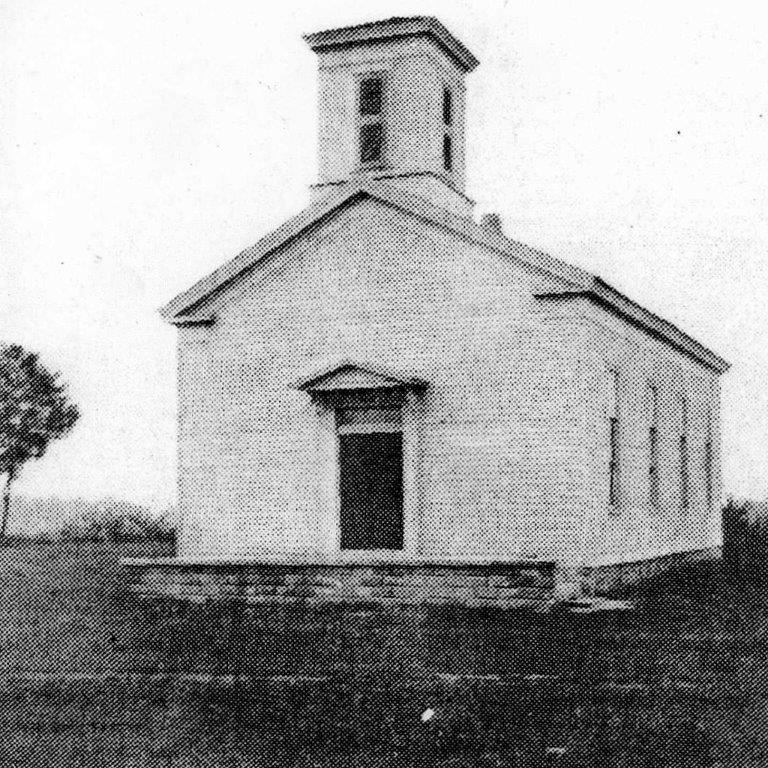

Coopersville Observer June 9, 1922
Article by R. H. Howard reprinted from the Grand Rapids Press
|
Lamont Congregational Church and the Civil War One of the best remembered episodes at the old church is the visit during the Civil War of John Brown, Jr., who held a recruiting meeting and gathered several men from Lamont for his "regiment of six-footers." Brown unstrapped his two six shooters and laid them on the pulpit before he began speaking. One of the stories he told to arouse his hearers was that of an experience of his celebrated father when he interfered with a Negro boy who was being "sold down the river." The lad was tied up by his thumbs on board a steamer until he fainted. John Brown cut him down and was caught at it. He was arrested, taken ashore and handed over to a sheriff who tied him in a wagon tongue ahead of the horses , and then raced the animals to jail.The old church was the news center of the neighborhood throughout the Civil War. It was never locked for three years and the bell was rung when important dispatches arrived. Prominent members of the congregation used to take turns reading the newspapers in the gatherings at night. Further History of Lamont Congregational Church Rev. James Ballard, first pastor of Park Congregational Church, Grand Rapids, Michigan, was the fourth pastor at Lamont. As he "rode circuit ," always with his umbrella on his saddle and bearing a strong resemblance to Lincoln, he made for the old-timers a fast color picture of the old days.Thomas Woodbury, early settler of Lamont, whose first wife is buried in Elmwood Cemetery, deeded the site of the Congregational church to the church and deeded the site of the Lamont boulevard to the village of Lamont. Woodbury's home, built in 1837, was still standing at this writing, although the pen in which he used to house his dozen tame deer has disappeared. His home was located south and a little west of the church. Coopersville Observer, December 22, 1899--The Congregational church will celebrate the fiftieth anniversary of its use with appropriate exercises, Tuesday, January 9, 1900. The church was organized December 18, 1849, but postponed the celebration date on account of the nearness to the holiday season. Coopersville Observer, April 14, 1899-- Rev. Ludlum entered upon his duties last Sunday and will live in the octagon house opposite the Congregational church. (The church was located overlooking the Grand River.)
The Lamont Congregational Church building was rented to the Reformed Church of Lamont. The Lamont Congregational Church had an internal problem that "crippled the spiritual life of the church, many members left and an injury was done to the body of Christ from which it never fully recovered," wrote a historian of 1898. The church revived, but later so many of the members left the congregation and moved away, due to the changing economy of Lamont, that the building was rented to the Dutch Reformed group. This group attempted to compete with the Lamont Christian Reformed Church but had to withdraw because they couldn't compete with the strength of the larger congregation which was comprised of 180 families. The Lamont Congregational Church became a library and community center. Coopersville Observer, September 5, 1919--A community library has been opened in the Congregational church. It will be open every Saturday afternoon from 2 to 4. Anyone wishing a book can apply to the librarian at that time. Coopersville Observer, June 6, 1919--Memorial exercises were held in the Congregational church. A very interesting address was given by C. C. Lillie of Coopersville. Coopersville Observer, May 17, 1922-- The address given by Captain Charles Belnap on "Ottawa County and the Civil War ," last Wednesday evening, was greatly appreciated by the large crowd that gathered in the Congregational church to hear him speak. A rising vote of thanks was given to Capt. Belnap, and also to Mr. Stowe, who has given the people of Lamont and vicinity a real treat and opportunity to hear several good talks before the old church is razed.Survivors of the Congregational Church in Lamont-1922 Theodore Smith , of Grand Rapids, and Albert Cole, of Marne, are the only two living deacons of the old Congregational Church.Other surviving members of the original congregational are: Mrs. Bert Cole , M. F. Walling, Mrs. Kate Nichols, Mrs. Theodore Smith, Mr. and Mrs. Arthur Smith, Cecil Phillips, all at Grand Rapids; Mrs. Colon Lillie, J. Parks and Mrs. Bettie Parks, Coopersville; Mrs. James Luther, South Bend, Indiana; Mrs. Ida Hatch, Kalamazoo; Mrs. Eliza Gibson, Lamont.The Lamont Congregational Church is torn down Coopersville Observer, November 12, 1926--The Congregational Church, an old landmark, is no more, having been torn down. In its place F. A. Stowe is erecting a beautiful residence.Northeast Ottawa County People by Henry and Loekie Boersma |
Transcriber: Joan Van Spronsen
Created: 18 July 2013